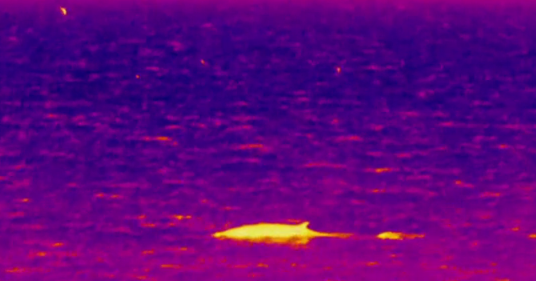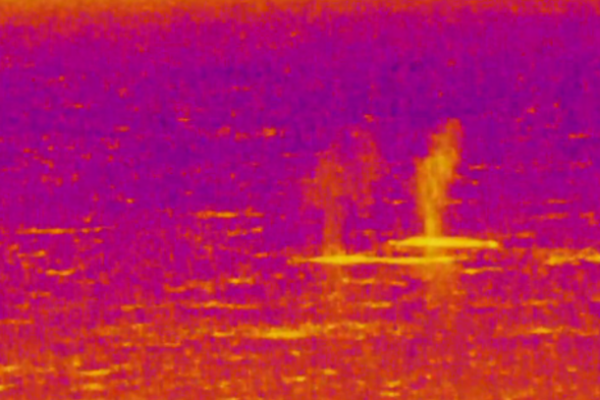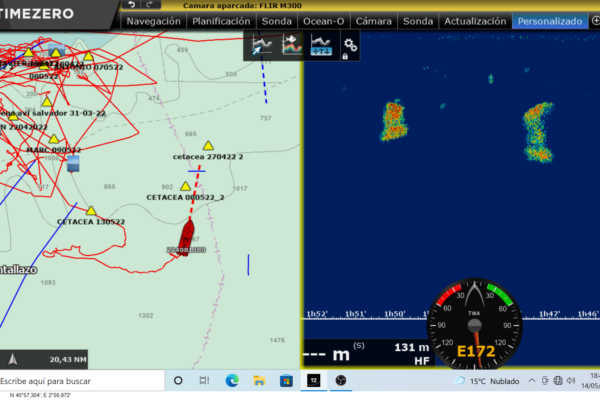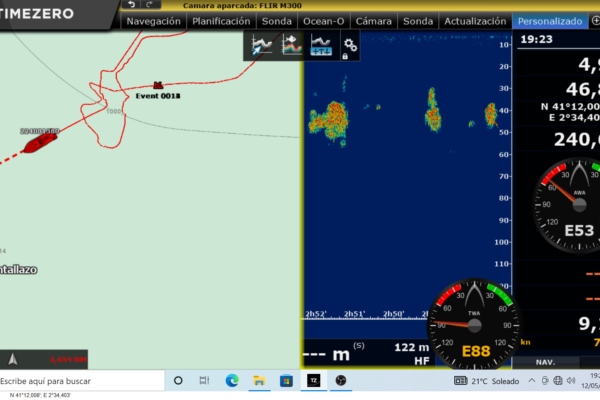EDMAKTUB
The EDMAKTUB Association is a non-profit organisation based in Barcelona. It is dedicated to the scientific study and dissemination of the aquatic environment, especially cetacean research.
Founded in 2000 by Dr. Eduard Degollada, the EDMAKTUB Association carries out its activities through different research projects, either through its own initiatives or by collaborating in studies carried out by other institutions. The interest is always to deepen the knowledge of the sea and marine fauna in order to preserve its richness and biodiversity.
For this purpose, the EDMAKTUB Association has a complete research platform whose central axis is a catamaran equipped with a remote-controlled multicopter (drone), hydrophone and various instruments for the collection of samples, sounds and images.
EDMAKTUB activities are supported by Ports de la Generalitat, Generalitat de Catalunya and Club Nàutic Vilanova i la Geltrú.
Values
The EDMAKTUB Association focuses its activities on the study of cetaceans and oceanographic parameters of the areas where these mammals are found, with the following objectives:
01
02
03
04
Why EDMAKTUB?
One of the most recurrent questions is why such a name for an association, some of you already know it, for the rest I will explain it for all the special connotations it has, both on a personal level and for what somehow imprints the character of this non-profit organisation, small but with a not inconsiderable track record. It all revolves around the name of the boat, now the catamaran Maktub, and in the early days of the association the ketch The Getaway Maktub.
The origins
I go back to the summer of 1995 in Menorca, an exceptional summer because of the intense days of more than 24 hours in which, apart from dedicating time to my doctoral thesis, scuba diving instruction, going out with friends and reading, I enjoyed the hospitality of the person who became a great friend, confidant and key person in the future of the subject of this text. So Anna, knowing my dreams of the sea, cetaceans and boats, strolling through the port of Maó, asked me: “Since you are so sure you will have a boat, what will you call it? I’ll give it to you right away if you have decided! That made me anxious to find a name for it.
As I was reading Paulo Coelho’s The Alchemist at the time, the word MAKTUB came to mind, which, as explained in the novel, literally means “it is written” in Arabic and is used as a concept of destiny. It was a perfect fit, if that ship ever came into existence it is because it was predestined and it would be called MAKTUB.
If Anna hadn’t asked me at the time, if I hadn’t been reading the Alchemist… maybe everything would have been different. Years later the extraordinary and fighter Anna left us and her memory took on much more meaning and significance in the fortuitous or perhaps predestined intervention in the choice of the name.
The beginnings
The Getaway Maktub
In the year 2000, the opportunity arose, it was again a series of coincidences or perhaps better causalities, to get an auction ketch in Gran Canaria, The Getaway, a beautiful name for a boat with a desire for freedom, a steel hulled motor sailboat with two wooden masts, which for administrative reasons had to change its name to The Getaway Maktub.
Travesías
From Canary Islands to Barcelona.
From Barcelona to Martinica / Dominica / Guadalupe / Antigua and Barbuda 2006.
From Barcelona to Tobago / Grenada / Saint Vincent / Santa Lucia / Guadalupe / Antigua / Veneçuela 2007
Proyectos
Project to the Canary Islands/ Canal Plus 2002-03
Project to the Strait of Gibraltar 2005
Project to the Caribean 2006/2007
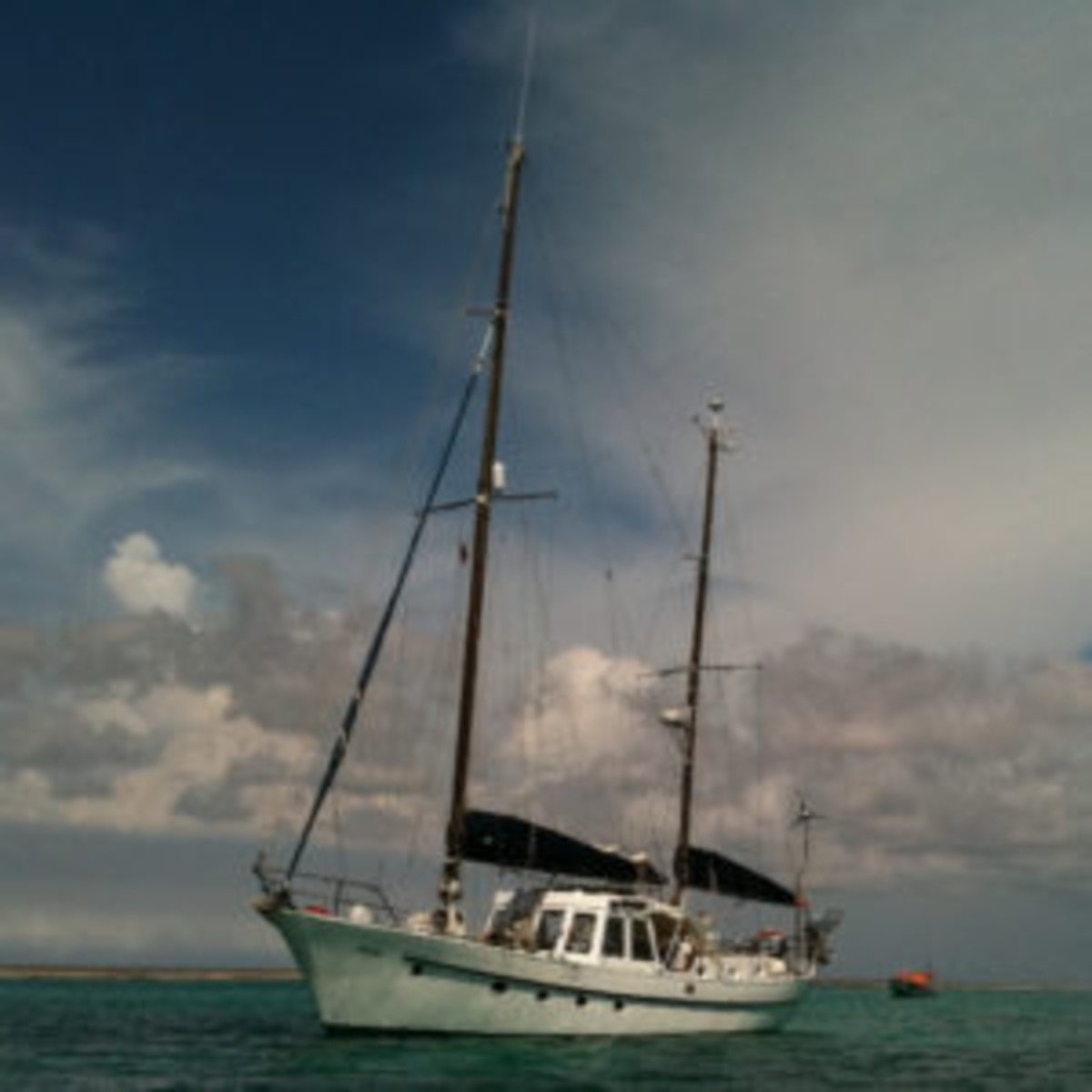

Nowadays
Maktub
In 2010 we had the opportunity to move from The Getaway Maktub to a Catana 471 catamaran, which was, “as it was written”, named Maktub.
Travesías
Around the Mediterranean.
From Barcelona to Canaries and Cuba.
From the Spanish Peninsula to Canary Islands/Cape Verde and back to Canary Islands 2019.
From Cape Verde to Sao Tome and Principe, Gulf of Guinea and back to Canary Islands.
Proyectos
BCNCET Project
Fin Whale Project
– Garraf / Catalan coast 2013-2023
– Denia 2017 / 2022 / 2023
– Canary Islands/ Lanzarote / Fuerteventura 2019
– Strait of Gibraltar 2023
– Galicia 2023
SACET Project
– Project Cape Verde
– Project Gulf of Guinea / Sao Tome and Principe
The radical difference to develop the objectives around a boat marked the name of the association, escaping from more conventional names and using, of course, the word MAKTUB because it was written again.
So we played with the word to get closer to the reason for the entity Association for the Study and Dissemination of the Aquatic Environment EDMAKTUB (difficult to combine the whole word).
Estudio (Study) y Divulgación (Divulgation) del Medio Acuático (Aquatic Environment) (EDMA) + MAKTUB = EDMAKTUB
And so, after many years, many projects and thousands of miles, we will continue to let the destiny of the EDMAKTUB Association revolve around the boats and, of course, the people who have formed the different teams throughout its history and have allowed us to deepen our knowledge of cetaceans.
Meet the team
The EDMAKTUB Association is made up of a group of scientists with degrees in veterinary science, biology, marine sciences or environmental sciences, as well as, other professionals specialising in different fields, such as marketing, graphic design, pedagogy, audiovisual techniques, among others.
“Passion, dedication and effort! These are the bases to grow day by day in the projects we carry out.”
Eduard & BeatriuEDMAKTUB Team
In EDMAKTUB we are compromised with the gender equality and respect. That’s why, alining with the European Comission, we have created a Gender Equality Plan (GEP). There you will find our main objectives and actions as well as our updated report of the situation inside the association.

Professor and researcher, his professional career has focused on different research projects with marine mammals as the object of study. This is an activity that he has developed in different university centres. His work and experience have been reflected in scientific articles and conferences, as well as in numerous presentations at national and international congresses.
Contact details:
edmaktub@edmaktub.org
(+34) 630 038 829
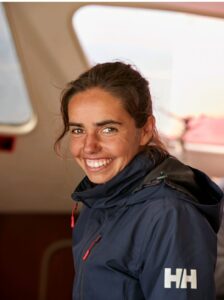
She started collaborating with the Association in 2017, as a researcher in the Fin Whale Project campaigns. Since then, she has been involved in the project, taking charge of the research lines related to sightings, behaviour and oceanographic conditions, in which she presented her final degree project and one of her master’s degree projects. Later on, he moved on to research lines related to the analysis of plankton, stable isotopes, maritime traffic analysis and the relationship with fishermen. His work and the experience acquired have been reflected in scientific articles, papers and presentations at national and international congresses.
Contact details:
beatriutort@edmaktub.org
Investigadores Proyecto Rorcual 2023
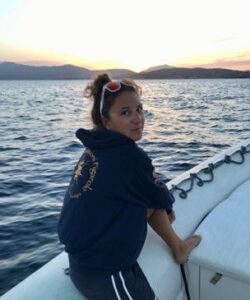
She joined the EDMAKTUB team in 2022 as a researcher focusing on photo-ID, working mainly on the cataloguing of more than 250 fin whales by combining traditional photo-ID techniques with drone imagery. During 2023, she has been in charge of continuing and implementing this project.
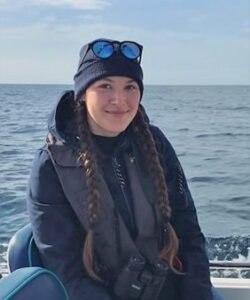
My interest is focused on body morphometry with the help of drone photogrammetry, which is a method to obtain reliable information of physical objects (in this case whales) through the process of recording, measuring and interpreting photographic images. Thanks to this technique we can obtain precise morphometric measurements of fin whales. These data allow us to follow the temporal and permanent changes in the animal’s body, including width, length and proportions. All these parameters allow us to know the feeding success of the animals, growth trends and even the population status and productivity of the area.

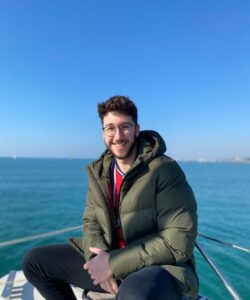
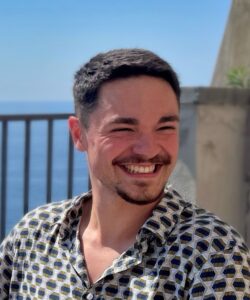
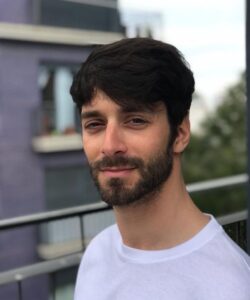

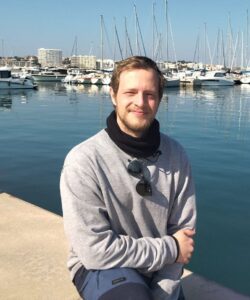
Interested in various branches of conservation and data analysis.
Past Researchers and Volunteers

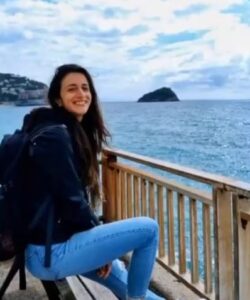

Infraestructure
The Maktub, our research platform, is a vessel equipped with modern instruments, computer equipment and everything necessary to carry out field research on cetaceans. It is based at the Club Nàutic Vilanova.
- Drone
- Camera
- Binoculars
- Nautical software
- Plankton Net
- Oceanographic Sensors
- Hydrophone
- Thermal camera
- Echosounder
- Sampling Material
The EDMAKTUB Association has been working with the use of drones for cetacean research in Mediterranean waters since 2015.
EDMAKTUB has been committed to the drone as a non-invasive working tool for the study of cetaceans since 2015, when it carried out the Aeromodel Project. During this project, funded by Fundación Biodiversidad, the effectiveness of a multicopter was compared with that of an aeromodel for the study of cetaceans. Undoubtedly, with the passing of the years and the rapid development of new drone models, it has become clearer that the drone (multicopter) is the optimal option for studying these animals from the air.
Since then, the association has collected images of the 8 species of cetaceans that can be found in the Mediterranean and many other species in other areas of the world. During these recordings we have been able to observe different types of behaviour, travel, feeding, socialisation and interactions between different species and it has allowed us to observe behaviours that we had not previously been able to detect from the boat, such as the feeding of the fin whale off the coast of Garraf, filmed during the Fin Whale Project.

EDMAKTUB currently uses DJI drones for all its projects and several publications have been made at conferences with the results obtained thanks to the use of the drone.
The data obtained thanks to the drone help us to better understand the social behaviour of cetaceans, their feeding strategies and their state of health, among many other things, and will allow us to apply conservation measures for these animals.
Drones make it possible to observe the animals from a privileged point of view with minimal impact on them, and to obtain information that was previously impossible without putting researchers at risk and at great economic cost.
Currently, the main uses of drones in the study of cetaceans are the following:
Drone uses in cetacean surveys:
Size and social structure of the groups.
Photo-identification. High quality aerial images allow the identification of pigmentation patterns and distinctive markings of the different species, enabling their identification.
Morphometric study and body condition. Data is obtained on the length of the animals and their growth and physical condition is studied. Thanks to this information it is possible to infer the state of health of the individuals as well as to locate possible problems derived from interactions with boats.
Biological sampling, the drone can fly over the blow of the whales with a device to capture the exhalation of the animals (blow-sampling) containing biological material such as DNA, hormones and bacteria. The sample is then collected and analysed in the laboratory.
Our videos!
The use of the drone has allowed us to observe different species of cetaceans during our projects, from fin whales and dolphins to pilot whales and sperm whales as well as elusive species such as Cuvier’s beaked whales.
The EDMAKTUB Association, which is authorised by the Dirección General de Sostenibilidad de la Costa y el Mar del Ministerio de Agricultura, Alimentación y Medio Ambiente to approach cetaceans for scientific purposes in the Balearic Sea.
The use of cameras allows us to obtain high-resolution images that enable us to identify individuals and report behaviour.
Reflex cameras with a zoom of 75-300 and 150-600 are used to obtain images of the different individuals in order to identify the species, the individuals and to be able to report the different behaviours observed. Other distinguishing marks, cuts or lesions can be identified and their body condition studied.
The images obtained are also used to record the presence of plastics as well as the proximity of merchant vessels to areas where animals are present. Disseminating the knowledge acquired over the years.

The use of binoculars is key to being able to scan the sea for marine animals.
The scientific team uses binoculars to find and identify animals and objects far from the boat. They can identify blowing sperm whales and sperm whales up to 2 miles away, and can also detect the splashes, fins and bodies of cetaceans in the distance.
They also allow us to detect groups of birds, fish and objects such as plastics, buoys and boats.
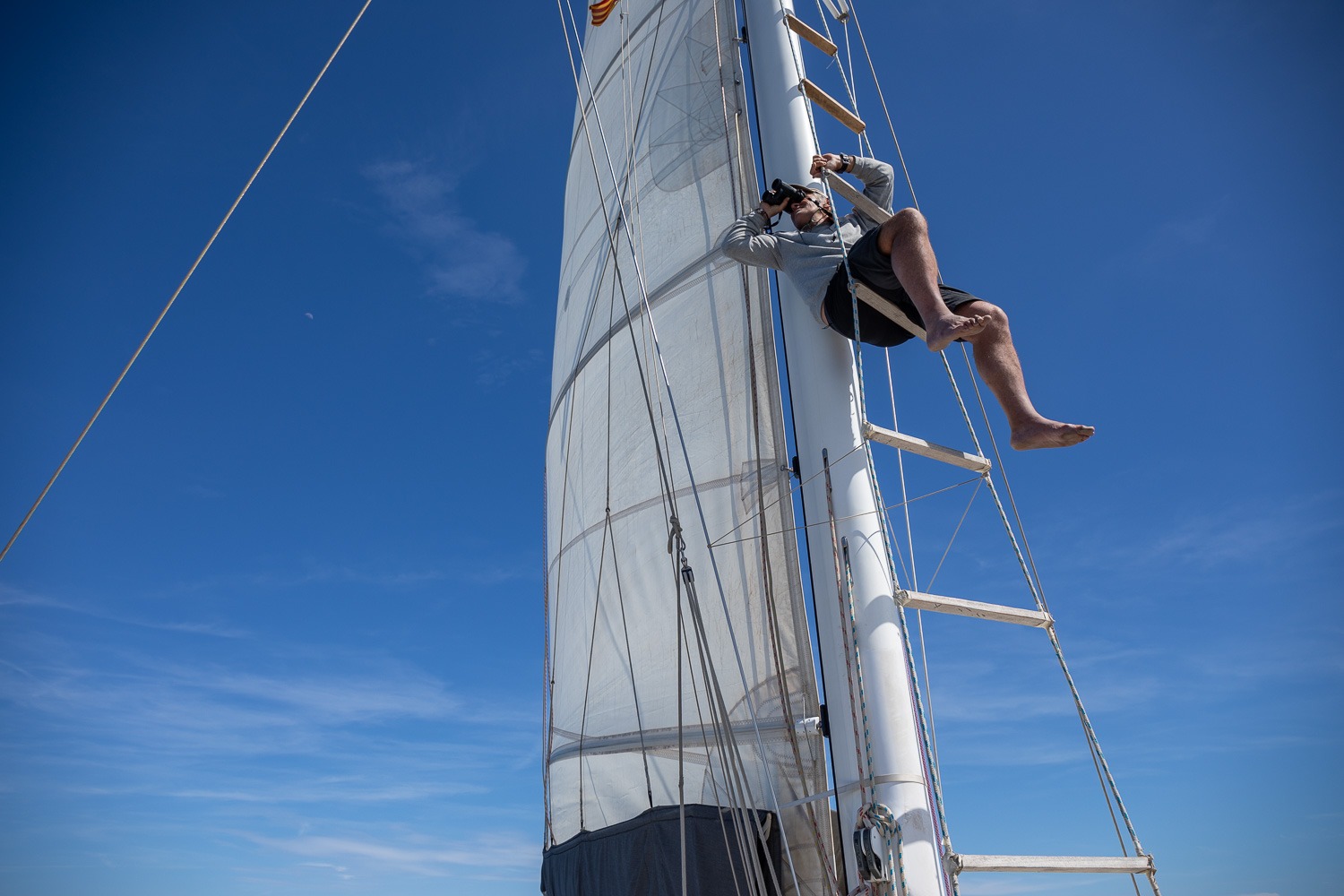
TimeZero, the team's nautical software, allows us to record nautical and oceanographic data from the study area throughout the trips.
The TimeZero software allows us to record the ship’s tracks, the tracks of merchant vessels in the area and meteorological and oceanographic data.
It also allows us to work with the echosounder and thermal camera.
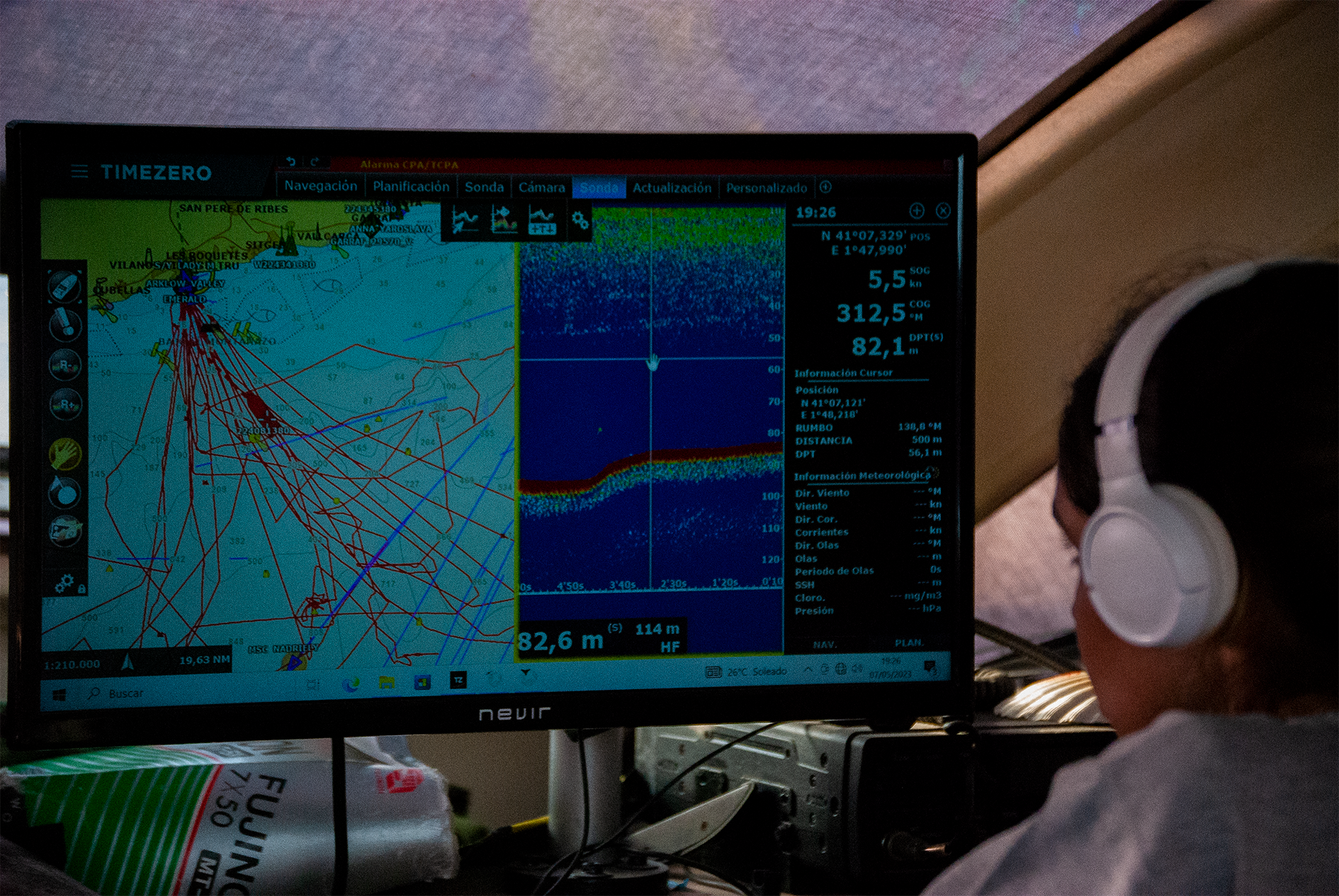
Zooplankton sampling allows us to know the diversity of plankton in the area.
Plankton are small organisms found in the water column. Collecting samples of plankton allows us to know the biodiversity of the area, the abundance of the different species and the state of the ecosystem.
In order to carry out the sampling, we use a net of plankton with a mesh of a few microns. Once the water has been filtered for a certain period of time, we collect and identify the species found as well as their abundance.
These results allow us to determine aspects such as the feeding of the fin whales and the productivity of the area.
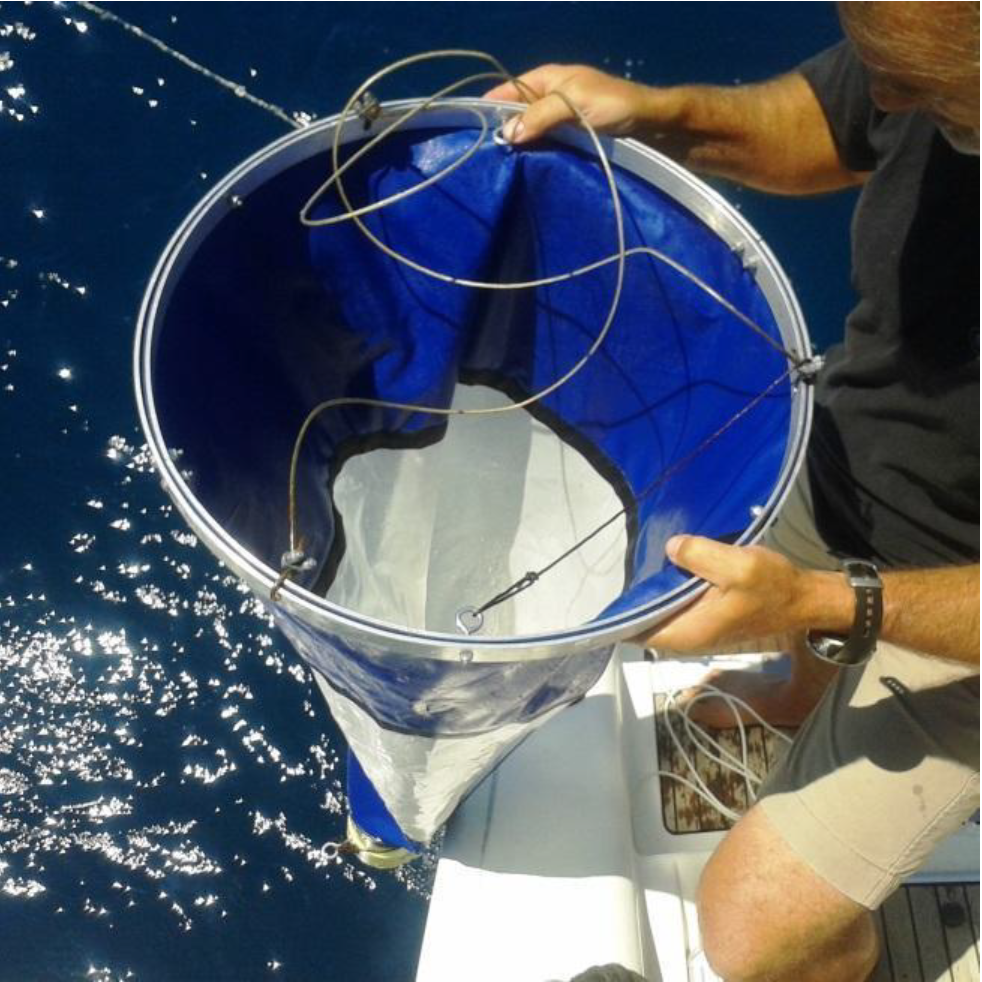
Oceanographic sensors such as the CTD are used to study the oceanographic conditions in the area.
The CTD is a device that measures the temperature and conductivity in the water column. This information allows us to monitor the evolution of the mixing layer in the water column and the productivity of the area.

The hydrophone allows us to listen to and record sounds produced underwater.
In order to monitor cetaceans using a passive acoustic method, we use three different types of hydrophones:
Trawl hydrophone. This hydrophone allows us to monitor and find cetaceans during marine campaigns on board the catamaran. We can detect and record the sound of dolphins and sperm whales while carrying out research transects.
Io-io hydrophone. This hydrophone requires the vessel to be at a complete standstill, allowing the sounds of dolphins and sperm whales to be heard while making stops on research transects.
SoundTrap. This hydrophone is installed on the bottom with a weight and records the sounds of the area for a certain period of time, after which it has to be recovered to extract the data. This hydrophone is used in collaboration with the Polytechnic University of Valencia and is used to monitor noise related to maritime traffic and the presence of fin whales in the study area.

The thermal camera allows us to detect murmurs and animal bodies from a distance.
A FLIR M364C LR thermal camera has been installed on the mast of the catamaran to determine the possible detection of fin whales from a distance.
The camera was installed on top of the mast of the Maktub catamaran and TimeZero software is used to view and control the images transmitted by the camera.
The echosounder allows us to detect masses of plankton in the water column.
The echosounder has been installed on the starboard skid of the Maktub catamaran. It helps us to detect the plankton shoals and the depth at which they are found, as shown in the pictures on the left.
The dark blue represents the sea, the colour intensity ranges from light blue to red with red being a high density.
We have all the necessary material for the collection of biological samples.
During the research we may sometimes collect blow samples, faeces, skin and fat samples. We have the necessary equipment on the boat to collect and store these samples for later analysis.
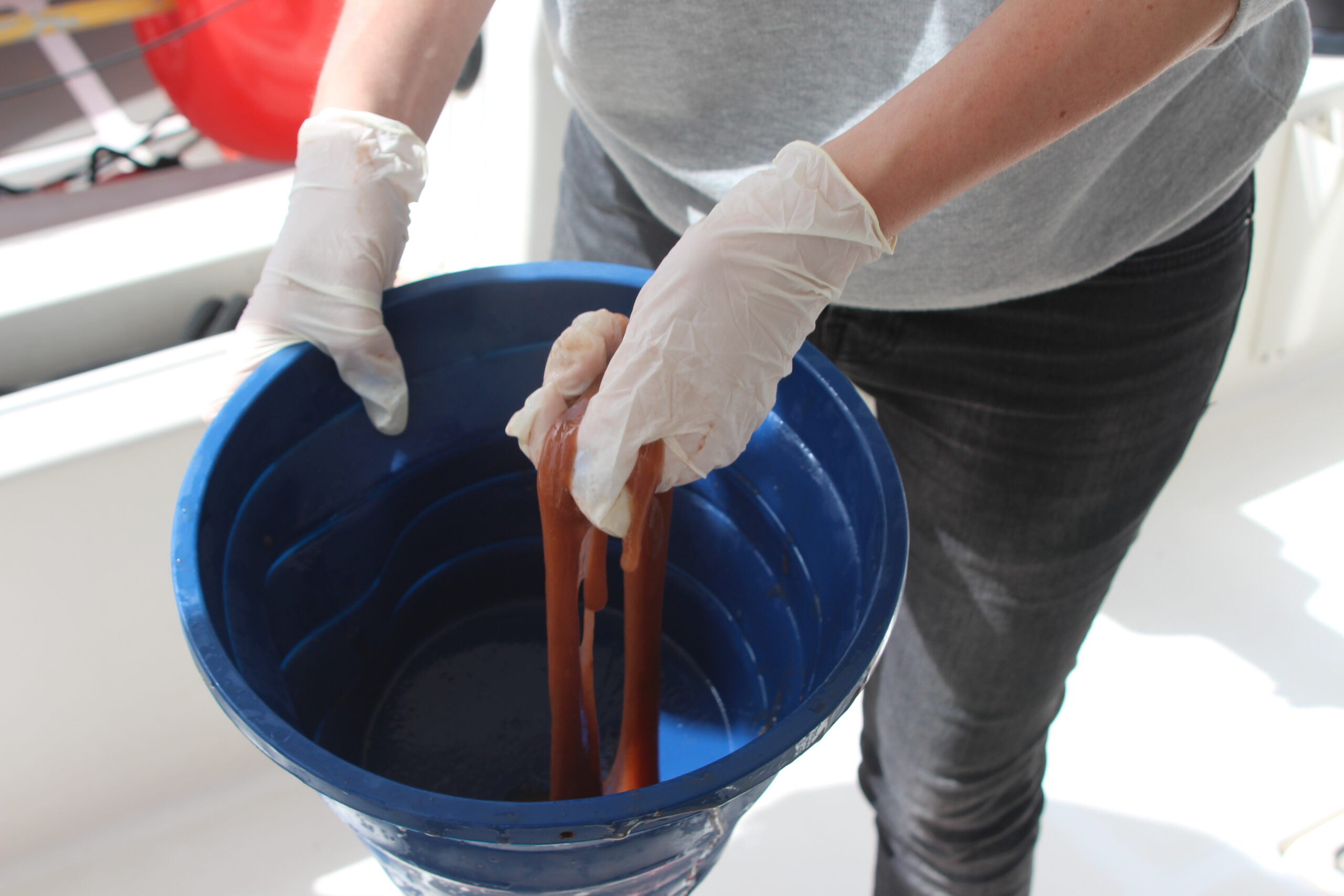
Our Partners











